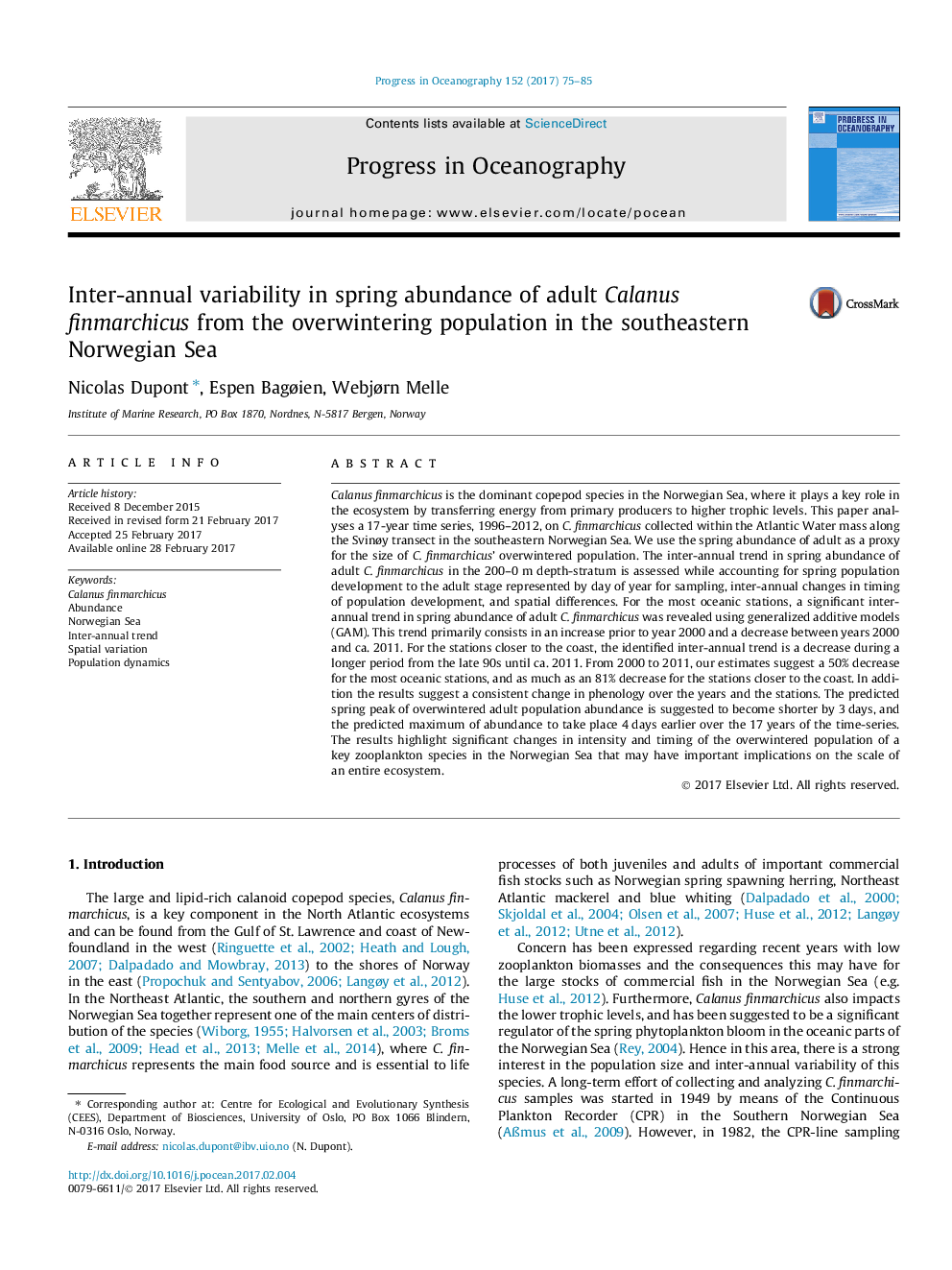| Article ID | Journal | Published Year | Pages | File Type |
|---|---|---|---|---|
| 5766547 | Progress in Oceanography | 2017 | 11 Pages |
â¢Spring abundance of adult C. finmarchicus decreases by at least 50% across years.â¢Inter-annual trends vary along the transect.â¢Spring peak of adult C. finmarchicus has become earlier with a shorter duration.
Calanus finmarchicus is the dominant copepod species in the Norwegian Sea, where it plays a key role in the ecosystem by transferring energy from primary producers to higher trophic levels. This paper analyses a 17-year time series, 1996-2012, on C. finmarchicus collected within the Atlantic Water mass along the Svinøy transect in the southeastern Norwegian Sea. We use the spring abundance of adult as a proxy for the size of C. finmarchicus' overwintered population. The inter-annual trend in spring abundance of adult C. finmarchicus in the 200-0 m depth-stratum is assessed while accounting for spring population development to the adult stage represented by day of year for sampling, inter-annual changes in timing of population development, and spatial differences. For the most oceanic stations, a significant inter-annual trend in spring abundance of adult C. finmarchicus was revealed using generalized additive models (GAM). This trend primarily consists in an increase prior to year 2000 and a decrease between years 2000 and ca. 2011. For the stations closer to the coast, the identified inter-annual trend is a decrease during a longer period from the late 90s until ca. 2011. From 2000 to 2011, our estimates suggest a 50% decrease for the most oceanic stations, and as much as an 81% decrease for the stations closer to the coast. In addition the results suggest a consistent change in phenology over the years and the stations. The predicted spring peak of overwintered adult population abundance is suggested to become shorter by 3 days, and the predicted maximum of abundance to take place 4 days earlier over the 17 years of the time-series. The results highlight significant changes in intensity and timing of the overwintered population of a key zooplankton species in the Norwegian Sea that may have important implications on the scale of an entire ecosystem.
